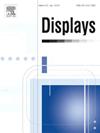HybriDeformer: A hybrid deformation method for arbitrary 3D avatar controlling
IF 3.7
2区 工程技术
Q1 COMPUTER SCIENCE, HARDWARE & ARCHITECTURE
引用次数: 0
Abstract
In this paper, we address the task of 3D avatar control, focusing on adjusting the shapes of characters. Most existing approaches generally fall into two different paradigms. Parameter deformation methods control shapes using several parameters, resulting in fast and accurate shape deformations, but they are not suitable for arbitrary 3D avatars. In contrast, non-parameter deformation methods can be applied to any 3D avatar but require substantial labor costs or supervision. To this end, we propose a hybrid deformation method termed HybriDeformer, which combines the strengths of both paradigms. The HybriDeformer includes a disentangled parameter deformer (DP) and a non-parameter deformer (NP). Specifically, the DP deformer allows users to freely deform arbitrary 3D avatars, while the NP deformer employs an optimized deformation strategy to drive each part of the 3D avatar to the desired shape, preserving smoothness as much as possible. Additionally, we present a new avatar dataset named ASTD for arbitrary 3D controlling, which can also be used for 3D avatar style transfer. Extensive experimental results on the arbitrary 3D avatar controlling task demonstrate that our method can be directly used by layman users to achieve high-quality deformation results. Our code and project are available at https://sites.google.com/view/hybrideformer.
求助全文
约1分钟内获得全文
求助全文
来源期刊

Displays
工程技术-工程:电子与电气
CiteScore
4.60
自引率
25.60%
发文量
138
审稿时长
92 days
期刊介绍:
Displays is the international journal covering the research and development of display technology, its effective presentation and perception of information, and applications and systems including display-human interface.
Technical papers on practical developments in Displays technology provide an effective channel to promote greater understanding and cross-fertilization across the diverse disciplines of the Displays community. Original research papers solving ergonomics issues at the display-human interface advance effective presentation of information. Tutorial papers covering fundamentals intended for display technologies and human factor engineers new to the field will also occasionally featured.
 求助内容:
求助内容: 应助结果提醒方式:
应助结果提醒方式:


